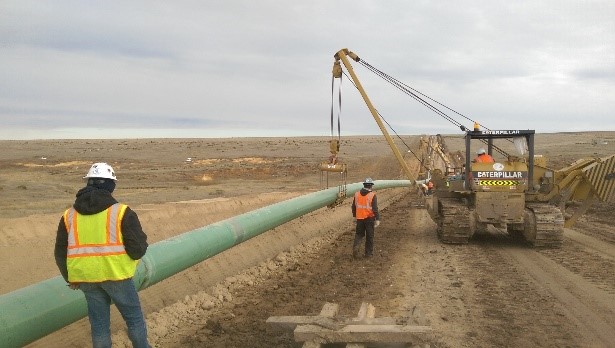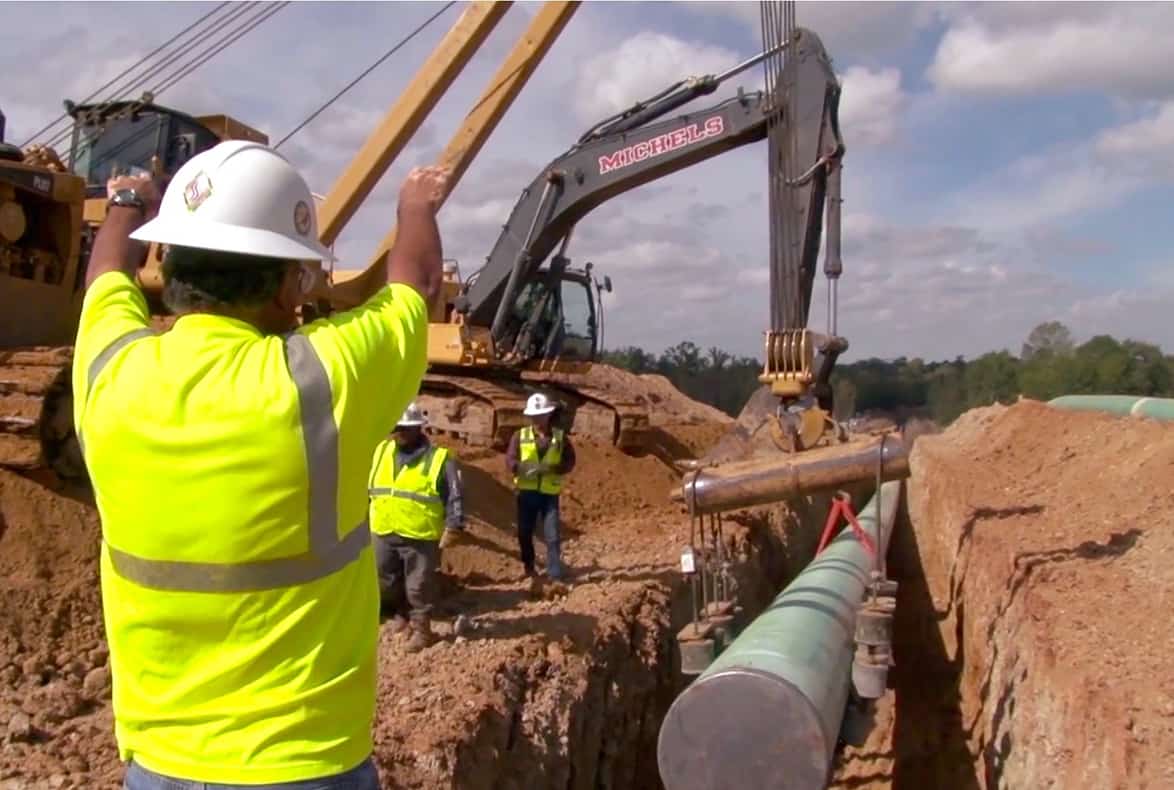What Affects Your System’s Lifespan? Insights From Creek Pipe HDPE installation
A Deep Dive Into Pipes Installation: Vital Variables and Considerations for Effective Projects
Reliable pipe installation is an essential aspect of design tasks. It involves a series of factors, from material option to exact sizing and layout. Each decision can notably impact the system's performance and long life. Understanding these components is vital for preventing expensive mistakes. Creek Pipe roustabout. As groups browse through the intricacies of installation, several vital considerations arise that warrant attention. What are the essential elements that can make or break a piping task?
Understanding Pipe Products and Their Applications
When selecting pipe products, one need to consider the specific applications and ecological conditions they will certainly encounter. Various products use distinctive residential or commercial properties that accommodate different demands. As an example, PVC is light-weight and immune to deterioration, making it optimal for water circulation systems. Conversely, steel pipelines offer stamina and durability, suitable for high-pressure applications however may need safety layers to stop rust.Copper pipes are favored for pipes due to their antimicrobial homes and simplicity of installation, while polyethylene is frequently utilized in underground applications as a result of its adaptability and resistance to cracking.The choice of product also depends upon temperature level extremes, chemical direct exposure, and installation area. For high-temperature applications, products like CPVC or PEX can be helpful. Eventually, understanding the features and restrictions of each material aids in making informed choices that enhance system performance and durability.
Importance of Correct Sizing and Layout
Appropriate sizing and design of pipes are crucial for making sure optimal flow prices and decreasing stress loss. These factors also play a significant role in figuring out the compatibility of materials made use of in the installation. A methodical technique to sizing and layout can significantly improve the efficiency and long life of a piping system.
Influence On Circulation Rates
Flow rates in piping systems are seriously influenced by the sizing and layout of the pipelines. Correctly sized pipes ensure that the fluid can move efficiently, reducing turbulence and maximizing flow ability. Oversized pipelines can cause reduced circulation rates, while undersized pipelines might restrict flow, resulting in increased rubbing and possible obstructions. The design should likewise think about factors such as pipe product, inner surface smoothness, and layout, as these contribute to the overall effectiveness of liquid transportation. Additionally, the setup of fittings and links within the system can affect circulation prices. Subsequently, careful attention to pipe sizing and style is crucial for maximizing flow performance in any type of piping installation project.
Stress Loss Factors To Consider

Just how can press loss greatly affect the effectiveness of a piping system? Pressure loss is a crucial element that can considerably diminish the performance of fluid transport systems. When pipelines are incorrectly sized or designed, too much pressure loss might take place, resulting in lowered flow rates and enhanced energy consumption. This inefficiency can result in higher functional expenses and potential system failings. Proper sizing and layout are necessary to minimize pressure loss, guaranteeing that fluid dynamics stay ideal throughout the system. Designers should thoroughly take into consideration variables such as pipe size, length, and material to attain a reliable balance. Ultimately, resolving stress loss during the layout phase can improve reliability and longevity, making it indispensable for successful piping projects.
Material Compatibility Aspects
Stress loss is not the only variable that can affect the performance of a piping system; material compatibility also plays a considerable duty in general performance. Guaranteeing that the materials used in a piping system work with the fluids they will certainly carry is vital. Various materials can respond detrimentally to various chemicals, resulting in corrosion, destruction, or contamination. This can eventually endanger the stability of the system and influence its long life. Furthermore, correct sizing and layout are very important to accommodate thermal development and contraction, which can better affect material efficiency. Examining variables such as temperature level, stress, and chemical make-up is critical in picking ideal materials, thereby boosting system integrity and minimizing maintenance costs in the long-term.
Techniques for Accurate Pipe Installation
Precise pipe installation is essential for assuring system performance and durability. Several strategies can improve the precision of this procedure. Cautious dimension is necessary; installers need to make use of top quality devices such as laser degrees and tape steps to figure out the precise lengths and angles required. Next, proper pipe cutting techniques, like using a pipe cutter instead of a hacksaw, guarantee tidy sides that promote much better links. Additionally, the use of positioning devices, such as pipe jigs, can notably enhance accuracy during setting up. It is likewise recommended to consider thermal expansion; allowing for adequate spacing and development joints can protect against future imbalances. The installation team should adhere to supplier standards to stick to details referrals connected to each pipe kind. By carrying out these methods, the likelihood of leaks and system failings reduces, ultimately contributing to a more trusted piping system.
Making Certain Pipe Positioning and Support
Correct positioning and assistance are critical to the stability and performance of any piping system. Misalignment can bring about enhanced stress on joints, possible leakages, and lowered performance. To ensure proper placement, it is important to make use of appropriate devices such as laser degrees and alignment gauges. These tools assist achieve specific positioning, guaranteeing that pipes are installed according to design specifications.Support systems have to be created to accommodate thermal development and contraction, in addition to the weight of the pipes and their components. Selecting the appropriate kind of assistances, wall mounts, and brackets is necessary. Each must be mounted at specified periods websites to avoid sagging or excessive tension on the pipelines. Regular assessments following installation can assist identify any type of imbalances or indications of poor support. By prioritizing placement and assistance, one can significantly boost the sturdiness and functionality of the piping system.
Common Installation Mistakes to Prevent

Checking and Examination for Quality Control
The installation procedure might appear total, extensive screening and assessment are vital to ensuring the long-term reliability of a piping system. Various methods are used to examine the stability of the installation, consisting of stress examinations, aesthetic inspections, and non-destructive testing (NDT) techniques. Pressure examinations validate that the system can withstand functional conditions without leaks, while visual inspections help identify any noticeable problems in the pipes or joints. NDT techniques, such as ultrasonic or radiographic testing, supply understandings right into the material stability without jeopardizing the system.Additionally, recording the testing results is important for future recommendation and conformity with market requirements. This documentation offers not just as a quality control procedure however also as a lawful safeguard. Inevitably, a detailed screening and assessment method contributes to the total security and see this page performance of the piping system, ensuring it satisfies the needed performance requirements gradually.
Upkeep Tips for Resilient Pipe Equipments
Maintaining a pipe system requires regular assessments and keeping track of to recognize potential issues before they intensify. Carrying out reliable cleansing strategies is likewise crucial for preventing accumulation that can impede efficiency. With each other, these techniques add to the longevity and integrity of the piping infrastructure.
Routine Inspections and Tracking
Routine inspections and tracking are necessary for making certain the long life and efficiency of pipe systems. Regular assessments can assist determine prospective issues such as leakages, deterioration, or clogs prior to they rise into significant issues. Applying a timetable for routine evaluations enables the early detection of deterioration, enabling prompt repair services. Surveillance stress levels and flow rates can also offer useful understandings right into system efficiency, making certain that any kind of abnormalities are resolved without delay. In addition, making use of sophisticated technologies, such as infrared electronic cameras or ultrasonic testing, can boost the assessment process by providing in-depth information concerning pipe conditions. Inevitably, constant monitoring and examinations add to the reliability and resilience of pipe systems, reducing the danger of costly fixings and downtime.

Efficient Cleaning Strategies
Effective cleansing techniques are necessary for maintaining the honesty and functionality of pipe systems. Consistently arranged upkeep, such as flushing systems with water, helps get rid of debris and build-up. For more persistent blockages, experts often advise hydro jetting, which uses high-pressure water to tidy pipe interiors thoroughly. Chemical cleaners can additionally be utilized yet should be picked thoroughly to avoid harmful pipelines. On top of that, using tools like pipe cams can aid in recognizing issue areas and making sure reliable cleaning. Keeping proper water drainage and preventing the disposal of damaging substances down pipelines further add to longevity. In general, regular cleaning methods not just boost performance yet likewise reduce the threat of expensive fixings in the future.
Frequently Asked Inquiries
What Are the Labor Expenses Related To Pipe Installation Projects?
Labor expenses for pipe installation tasks vary extensively, influenced by variables like project complexity, regional wage prices, and required abilities (Creek Pipe Midland). Typically, these prices can vary from $50 to $100 per i loved this hour, relying on the workforce entailed
How Do Local Rules Affect Pipe Installation Practices?
Local regulations significantly affect pipe installation methods by establishing security requirements, product specs, and installation methods. Conformity with these laws guarantees project safety and security, ecological security, and adherence to regional codes, inevitably influencing overall job success and costs.
What Tools Are Important for Pipe Installation?
Essential tools for pipe installation consist of pipe wrenches, cutters, and fittings. In addition, sealants, gauging tapes, and degrees guarantee precision and toughness. Proper tools promotes performance and adherence to security standards throughout the installation process.
Just How Can Weather Issues Effect the Installation Process?
Weather greatly influence the installation process, as severe temperatures, rain, or wind can influence product stability, employee security, and project timelines. Appropriate planning and organizing are essential to minimize these potential obstacles during installation.
Are There Service Warranties for Installed Pipe Solutions?
Warranties for set up pipe systems usually differ by supplier and installation professional. Commonly, they cover flaws and handiwork for a specified duration, ensuring the system's dependability and giving satisfaction to the building owner.